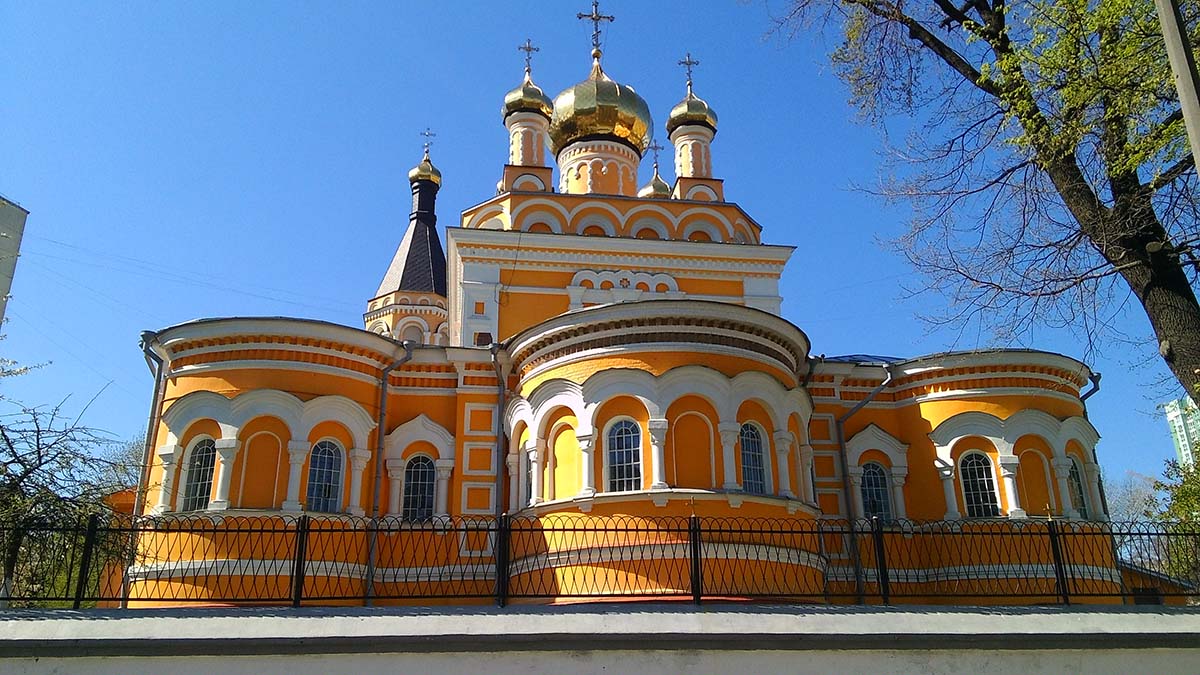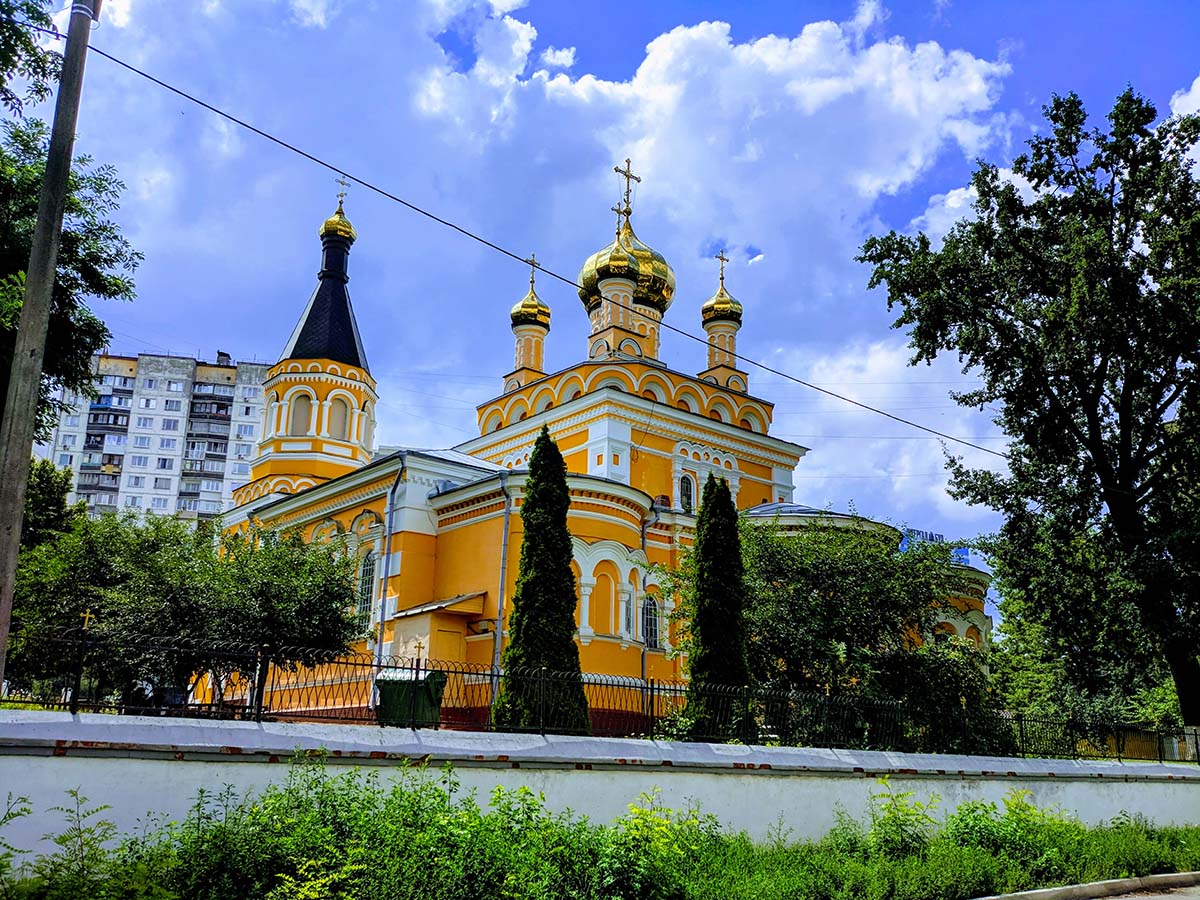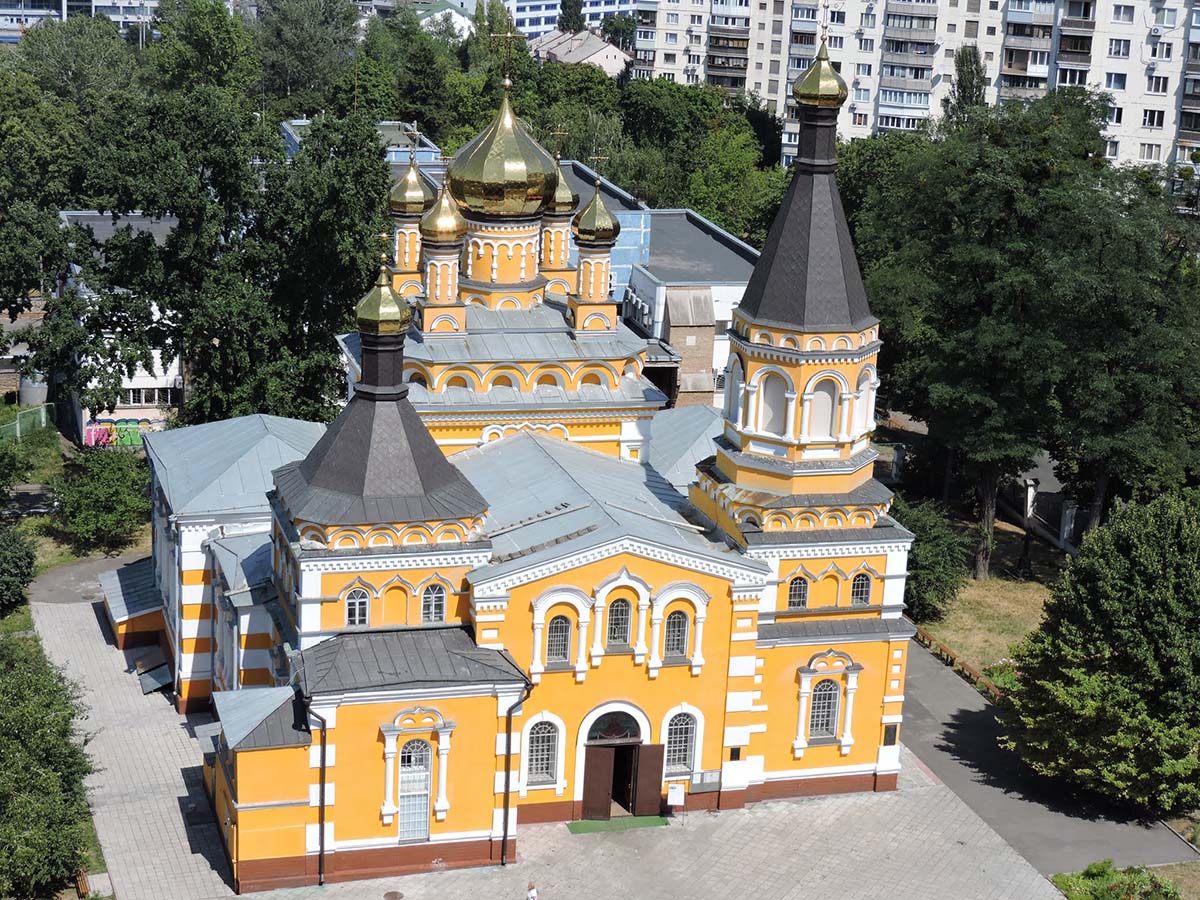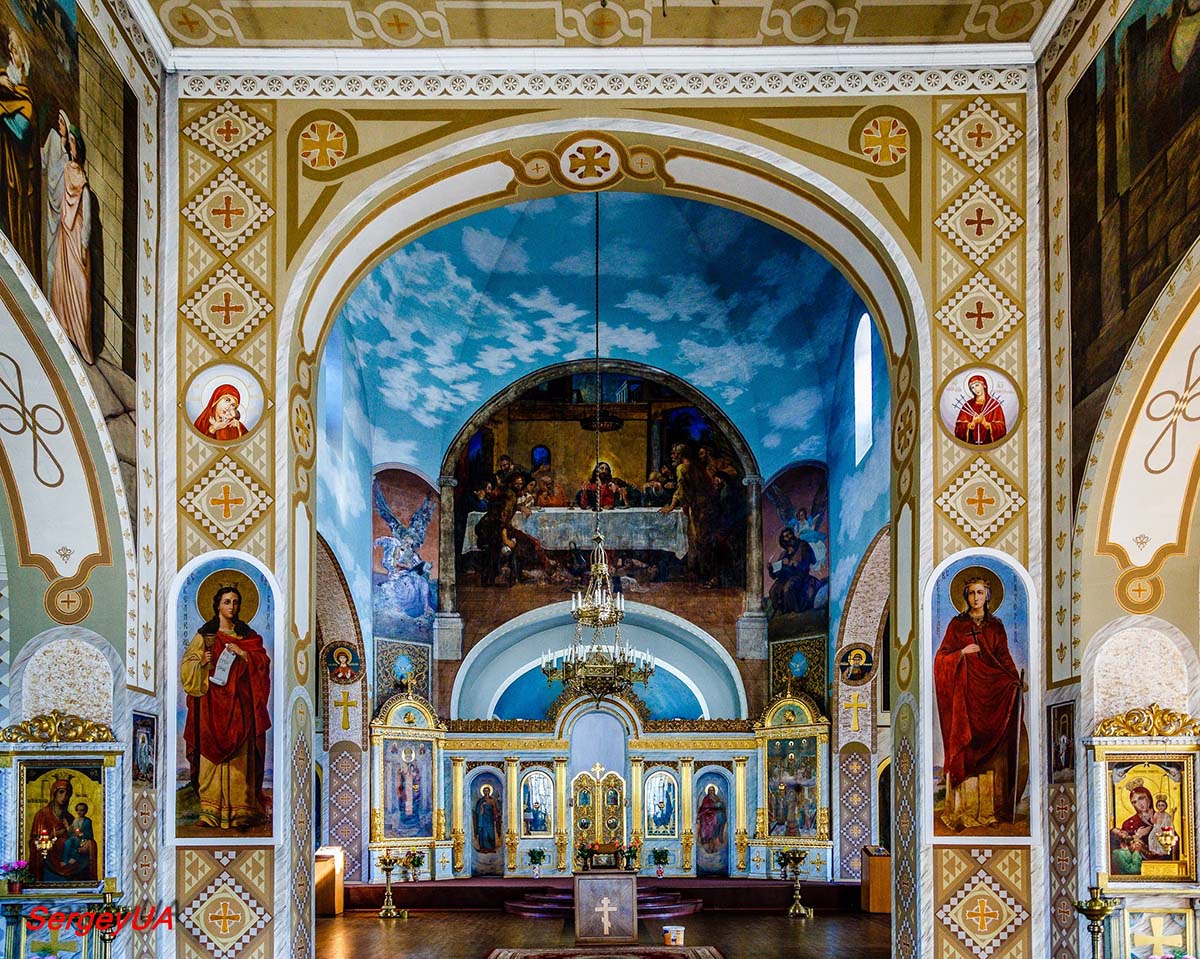The idea of building the Intercession Church with the Platonov altar – in memory of Metropolitan Plato, who died on October 1, 1891 – belonged to the Kyiv mayor Stepan Solsky. At the end of the 19th century, there was not a single church on Solomenka, at that time a developed and densely populated outskirts of Kyiv, so the initiative of the mayor was met with approval. The project of the religious building was carried out by the architect Ippolit Nikolaev, the son of the famous Kyiv architect Vladimir Nikolaev. The foundation stone of the church took place on September 14, 1895, and it was consecrated 2 years later – on November 9, 1897. The collection of funds and the construction process were led by a public committee headed by the famous Kyiv entrepreneur and city leader Yakov Berner, who personally invested 2,000 rubles and 25,000 bricks into the business. In total, the committee, which also included famous philanthropists Mikhail Degterev, Alexander Tereshchenko and other prominent personalities, collected 37,000 rubles for construction.
The paintings of the temple were carried out by the artist Ivan Seleznev. In addition to the main altar of the Intercession of the Mother of God, the Church of the Intercession had two more altars: the right one of St. Plato the Confessor and the left one of the Myrrh-Bearing Women. Around the large main dome there were 5 decorative small ones. At the church there was a parochial school and a women’s charitable society, which opened a day shelter for young children here in 1906. In 1907-1914, according to the project of engineer Konstantin Srokovsky, the Church of the Intercession was reconstructed. As a result of the restructuring, the church was expanded almost twice: the size of the chapels increased, and a three-tier bell tower was added.
During the Soviet era, the Church of the Intercession miraculously managed to survive, but the temple was not spared by a large-scale state anti-religious campaign. In 1939, the communist authorities closed the temple. At the same time, it was “decapitated” – the church domes and bell tower were demolished from the building, and the general appearance of the church was as close as possible to Soviet buildings. This was done in order to save money: in this way, the authorities seemed to be fighting religion, but at the same time saving money on the demolition of the temple. It was believed that the church, deprived of its domes, no longer posed a “threat to the working people,” and its role and dominant position in urban development immediately decreased. During the German occupation of the city, in 1941, services in the temple were resumed and it has never been closed to this day. In the 1960s, the Church of the Intercession almost became the cathedral Orthodox church of Kyiv. During these years, after a slight weakening in the 1950s, brutal persecution of the church resumed and the Kiev city authorities considered the possibility of closing Vladimir Cathedral, which at that time had the status of a cathedral, and the transfer of the department away from the center of Kyiv, to Solomenka. However, thanks to the extraordinary efforts of believers, this was prevented.
During the times of independent Ukraine, the Intercession Church was completely revived. In the 2000s, through the efforts of the church community and the rector of the temple, the domes and bell tower of the church were restored, which made it possible to return the religious building to its original appearance. The cathedral operates a Sunday school for children and adults.
Where is the Holy Intercession Cathedral?
Patriarch Mstislav Skrypnyk Street, 20/1
services: morning 08:30, evening 17:00
(044) 245-27-97




